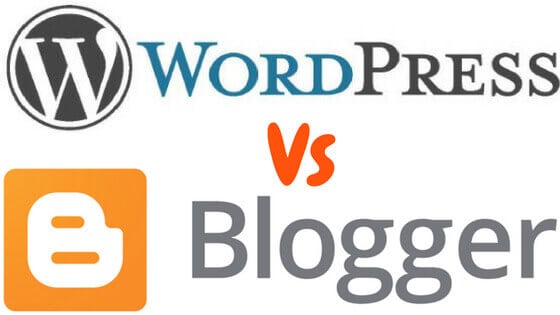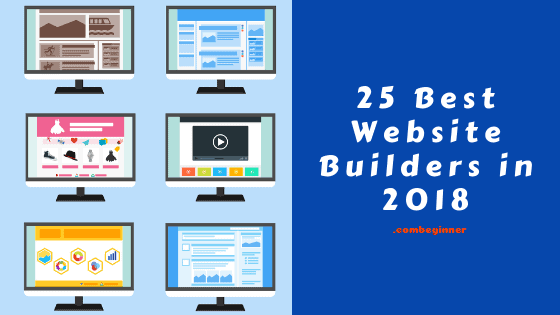Last Updated on January 18, 2023
WordPress is a powerful and user-friendly platform that makes it easy for anyone to create a professional-looking blog. It’s free, open-source, and offers a wide variety of customization options to make your blog unique. With WordPress, you can create a blog to share your thoughts, promote your business, or even build a community around a shared interest.
Imagine having a platform to share your ideas, opinions, and experiences with the world. With a WordPress blog, you can build your personal brand, increase your online presence, and even make money through advertising, affiliate marketing, and sponsored content.
In this blog post, we will guide you through the process of setting up and customizing your own WordPress blog. We will give you step-by-step instructions and tips to help you start your own successful blog, from making a WordPress account to choosing a theme to publish your first post. Don’t wait any longer; start your blogging journey today with WordPress.
Key Takeaways (TL;DR)
- Setting up a WordPress account involves choosing between different types of accounts, such as a free or paid account.
- WordPress can be installed through a one-click installation process, manual installation, or a website builder.
- Customizing your blog can be done by using a pre-designed theme, custom CSS, widgets, and plugins.
- Creating and publishing content on a WordPress blog can include blog posts, pages, media, and custom post types.
- Optimizing content for search engines and social media can be done through the use of keywords, alt tags, social media sharing buttons, internal and external linking, and meta tags.
- Managing comments and readers on a WordPress blog can include moderating comments and managing spam, as well as building and engaging with a readership.
- Additional resources for learning more about WordPress and blogging are available online.
🌟 Setting up a WordPress account
The first step in the creation of a WordPress blog is setting up a WordPress account. We will go through the process of setting up a WordPress account in detail. You have a few different options, depending on what you want and what you can do technically.
The first option is WordPress.com, which is a free, hosted version of the platform. This is a great option for anyone who wants to get started with a blog quickly and easily, as it takes care of all the technical details for you. However, this option has some limitations on customization and monetization options.
The second option is WordPress.org, which is a self-hosted version of the platform. This choice gives you full control over your site and more ways to make it your own and make money, but you’ll have to buy your own domain name and hosting.
The third choice is WordPress VIP, which is a high-end enterprise solution for large businesses, news organizations, and other high-traffic sites. This is the most powerful option, with the highest level of performance and security, but it also comes at a higher cost.
To set up a WordPress account, you’ll need to go to WordPress.com or the website of your chosen hosting provider. From there, click on the “Create a Website” or “Get Started” button and fill in the required information, such as your email address and desired username.
When choosing a domain name and hosting provider, it’s important to keep a few things in mind. First, you want to choose a domain name that is easy to remember, relevant to your blog’s topic, and not already in use. Look for a hosting service that keeps your site up and running reliably, has good customer service, and gives you enough space and bandwidth to meet your needs. Also, think about how scalable the hosting service is since your blog may grow in the future. And finally, compare the pricing and features of different hosting providers to find the best fit for your blog; if you don’t have technical knowledge, choosing a hosting provider that offers one-click WordPress installation may be a good idea.
🌟 Installing WordPress
WordPress can be installed in a few different ways, depending on your needs and technical abilities. One popular way is to use a one-click installation offered by many hosting providers, which makes the process quick and easy. Another option is to do a manual installation, where you upload the WordPress files to your server and create a database. This option requires more technical knowledge and understanding of web hosting and MySQL. Lastly, you can also use website builders like Elementor or Divi that have the option to create a WordPress site within their platform.
If you choose to have your hosting company install WordPress for you, the process is pretty easy. First, you will log in to your hosting account, then look for the “WordPress” or “Website” section, and click on the “Install” button. Next, you will follow the prompts to select the domain name you want to install WordPress and choose the WordPress version you want to install. Once the installation is complete, you will be able to log in to your new WordPress site.
However, sometimes things don’t go as planned, and you may encounter some issues during the installation. Some common problems include getting a “404 error” or “page not found” after installation, not being able to log in to your WordPress site, your site not looking right, or not being able to get to the WordPress dashboard. If you’re having trouble, you can try resetting your permalink settings, checking that you’ve entered the correct username and password, switching to a default theme, or checking your server’s PHP version. If you still can’t fix the problem, you can ask your hosting provider for help or look for more information in the WordPress support forum.
🌟 Customizing your blog
Now comes the customization part, and we will go over the different options available to customize the look and feel of your blog. One of the most popular options is to use a theme. There are a lot of free and paid themes that are easy to install and change on WordPress. These themes come with layouts, colors, fonts, and other design elements that can be easily changed to fit your brand or personal style. You can also choose from different types of themes, like magazines, blogs, e-commerce, portfolio, etc.
Another option is to use custom CSS. This is a more technical option that requires you to know CSS, but it lets you make more advanced changes to your site’s design, like changing how elements are spaced or lined up.
Plugins are another great way to give your blog more features and functions, like contact forms, social media integration, and more. And widgets, which are available in WordPress, can be added to different parts of your site, like the sidebar or footer, to show dynamic content like links to your most recent posts or social media pages.
Log in to your WordPress dashboard and go to Appearance > Themes to add a theme. Browse through the available themes and preview them by clicking on the “Live Preview” button. Once you have found a theme you like, click on the “Activate” button to install and activate it on your site. After activating the theme, you can begin customizing it to match your brand and personal style by going to Appearance > Customize.
When customizing your blog, experiment with different widgets to see how they impact the design and functionality of your site. And if you’re comfortable with CSS, you can use custom CSS to make specific design changes that are not available through the theme customizer. Don’t forget to use plugins to add extra features and functions to your blog, like contact forms or social media integration. And if you want to know more about how to change your theme, you should always look at the theme documentation or support forums.
It’s also crucial to test your design on different devices and browsers to ensure it looks great and works well across all platforms. And always back up your site before making any major changes in case something goes wrong. With these tips and guidelines, you’ll be able to customize your blog to match your brand and personal style, making it stand out and look professional.
🌟 Creating and publishing content
Now let’s talk about the different types of content that can be added to a WordPress blog. The most common type of content is a blog post. These are typically used to share news, thoughts, and information with readers. Pages, on the other hand, are used to create static content that doesn’t often change, such as an “About” or “Contact” page. Media, like images and videos, can also be added to your blog and inserted into posts and pages. And if you want to create different types of content, like products, services, portfolios, etc., you can create custom post types in WordPress.
Creating and publishing new content is simple. Log in to your WordPress dashboard and go to Posts > Add New to create a new blog post. Fill in the title and content of your post, and use the toolbar to format your text, add images, and more. To create a new page, go to Pages > Add New. To upload media, go to Media > Add New. Once you’ve created your content, you can publish it by clicking the “Publish” button. If you’re not ready to publish yet, you can save it as a draft to come back to later.
It’s also important to optimize your content for search engines and social media.
- Use keywords in your title, headings, and throughout the content to help search engines understand your content, and use alt tags to describe images.
- Make use of social media sharing buttons to make it easy for readers to share your content on their own social media accounts, and insert both internal and external links to help search engines figure out how your site is set up.
- You can also use Yoast SEO or another SEO plugin to look at your content and suggest ways to improve it.
- Additionally, structured data and meta tags can improve how your content shows up in search engine results.
- And don’t forget to update your content often and share it on social media to get people to visit your blog and interact with it.
By following these tips and rules, you’ll be able to create and post high-quality content optimized for search engines and social media. This will make your blog more visible and encourage more people to interact with it.
🌟 Managing comments and readers
Now that you have started posting high-quality content on your blog, it’s time to explore different ways you can manage comments and readers on your WordPress blog. Comment moderation is an important aspect of managing a blog, and WordPress has built-in tools that make it easy to approve, edit or delete comments before they appear on your site. Another common issue is spam comments, but WordPress has spam filters built in, and you can also use spam-blocking plugins to help manage them. A blog’s subscriber management is also important, and WordPress makes it easy to keep track of your readers by letting them sign up for your blog and get updates by email.
Moderating comments and managing spam is easy. Simply log in to your WordPress dashboard, go to the comments section, and approve, edit, or delete comments as needed. You can also mark comments as spam if they appear to be spam. You can use built-in spam filters or install a plugin that blocks spam to stop spam comments.
Engaging with your readers is crucial for any blog. Use the following tips;
- Respond to comments and questions from readers to encourage engagement and build relationships.
- Use social media to promote your blog and connect with readers.
- Build an email list to keep in touch with readers and send updates about your blog.
- Use analytics tools to track your readership and understand the most popular content.
- Make people feel like they are part of a group by letting them write guest posts, start a forum, or build a group on a social network.
- Create a newsletter to keep readers informed about new content, events, and other important news.
- Always be open to feedback and suggestions from readers to improve the experience for everyone.
✍🏽 Conclusion
In conclusion, this blog post has been a comprehensive guide on how to create a WordPress blog from start to finish. Setting up an account, installing WordPress, changing the design, writing and publishing content, managing comments, and readers, and giving tips on how to make your content better for search engines and social media were all covered.
Now that you’ve learned all of this, we want to remind you that there are many resources available online for learning more about WordPress and blogging, and we encourage you to take action and start your own blog using the knowledge you’ve gained from this post. Remember, with WordPress, the possibilities are endless, and you can create a blog on any topic you’re passionate about. So go ahead and start your own blog today!




 " decoding="async" loading="lazy" >
" decoding="async" loading="lazy" > 